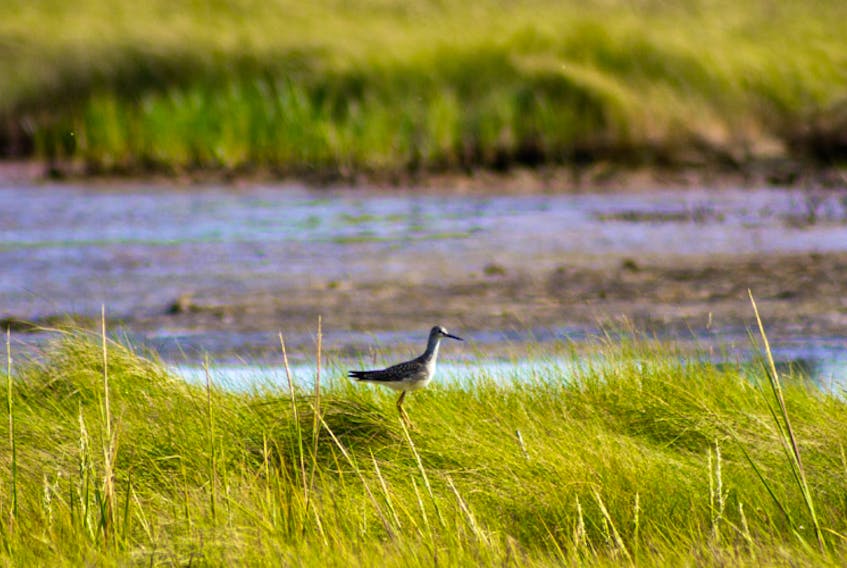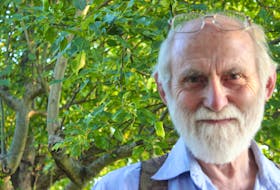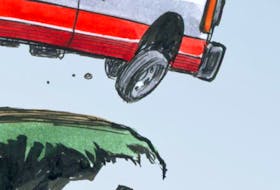We live in the age of mass extinction, a harsh reality which dogs me each week. Our tactless conquest of the natural world is leaving precious little habitat for the species and ecosystems which made this planet beautiful, mysterious and, incidentally, habitable. My summer reading of authors like David R. Boyd, Lawrence Anthony, Edward O. Wilson and Frans de Waal brought this modern crisis into sharp focus for me, and the weight of my realizations left me with two choices — to implode, like so much weak sauce or to volunteer.
Nature trusts are among our most important charities because they acquire ecologically significant lands and protect them for, well, ever. This is one of the most effective solutions to mass extinction we have, to which I encourage everyone to contribute. My first brush with such a charity was the Nova Scotia Nature Trust, safeguarding the 100 Wild Islands off Nova Scotia’s East Coast and piecing the St. Mary’s River back together with exciting progress. Then there was the Nature Conservancy of Canada, slowly reassembling the Isthmus of Chignecto and investing national funds in our tiny region.
This time, however, I threw my free time toward the Island Nature Trust, protecting what slivers of wilderness endure on Prince Edward Island so that this province might maintain its bruised biodiversity. They illustrate the importance of volunteerism because, while their resolve and virtue are ironclad, their budget is decidedly not. How could they possibly conduct thorough wildlife surveys, acquire new lands or monitor the properties under their protection without a small army of volunteers?
There are several ways to bolster a charity such as this. I’ve opted to be a property guardian, someone who visits a piece of protected land regularly to make sure everything’s in order. It might not be glamorous to search for illegal campfires or garbage dumps, but it’s vitally important and if you possess any of a naturalist’s skills, your visits can be that much more helpful to the staff of your local land trust. The more they know about a property’s ecology, the better.
As a budding birder who can also identify at least some trees reliably, I chose Bird Island, P.E.I., as the sight of my volunteer visits. This property was acquired by the Island Nature Trust in 2002 and is a difficult one to pay regular attention, given its location. I own a kayak, however, and can reach Malpeque Bay — in which this island resides — easily. This bay is an internationally designated Important Bird Area (IBA), recognized for its conservation value to bird biodiversity, yet, another selling feature for this wayward amateur.
I launched in the late afternoon from the sleepy shores of Lennox Island and paddled across very shallow waters. Upon reaching Bird Island, I was careful to remain quiet. Perhaps two thirds of this island is composed of wetlands in which I could do some stellar birding, assuming, of course, I didn’t frighten by quarry first.
This island immediately blessed me with solitude, even if the garbage accumulating on its beaches was a constant reminder of my frustrating species. Within minutes, I’d photographed the least sandpiper, white-rumped sandpiper, great blue heron, ring-billed gull, herring gull, large-headed gull, semipalmated plover, black-bellied plover, lesser yellowlegs, greater yellowlegs, Caspian tern and green-winged teal.
They were in fact skittish, perhaps acquainted with others who visit these shores and let their dogs off-leash. I found telltale footprints in the sand and wondered how many birds had died from these overenthusiastic canines. Islands are bird sanctuaries because they tend to lack the mammalian predators which stalk them on the mainland. The invasion of such predators onto the remote islands of the world is part of the reason so many birds are in decline. Here, I feared, was another example.
I was blown away by the beauty of this place, unsullied by oceanfront development or an excess of beachgoers. The bay was clear, the beach was smooth and its resident birds strode among the gentle waves as though walking on water. Each of them were accompanied by a charming reflection immediately below, doubling the sky and sandbar horizon. The wetlands were dominated by violent greens bending with the wind and its waterfowl congregated in great numbers.
The only downside to this wilderness were the mosquitoes. At first there were one or two, but before long, I was swatting them constantly. The swarm surrounding me became so thick that I couldn’t hear the birds or nearby boats for their buzzing. This crowded my lens when I tried taking pictures and prevented my lingering. Thousands surrounded me until each slap on my exposed skin killed five, 10 or more. The insects of Bird Island are apparently immune to repellent sprays of any kind and I could no longer inhale without covering my mouth, lest I swallow a few dozen.
I rounded the island then hiked through its forest, containing more than a few rarities. For one, it’s mature, an unusual state of affairs for island greenery. It also supports the small round-leaved orchid, black ash and American beech trees which, miraculously, dodged the beech bark disease destroying its mainland counterparts. Seclusion has its benefits.
I promptly discovered another feature of this island. The incredible sums of deadwood bordering its forest support outstanding colonies of woodpecker. This family of birds rank among my favourites and I tracked them with zeal. The barks of trees, living or dead, were covered with downy woodpeckers, hairy woodpeckers, Northern flickers and yellow-bellied sapsuckers species, all on display in the same stand of old hardwood. I saw trees stripped as though by a pileated woodpecker, the mightiest of those which visit Prince Edward Island, but I didn’t have the pleasure of spotting one.
When I returned to my kayak, it was at a run. The mosquitoes had built to such a staggering, scarring number that I could no longer bear it. They ushered me off protected shores and have left me with hundreds — yes, hundreds — of bites, but even this wasn’t enough to spoil my memories of Bird Island. Its forests were mighty and its wildlife abounding and some day, testament to my anti-extinction efforts, I will return ... wearing a bug jacket.









